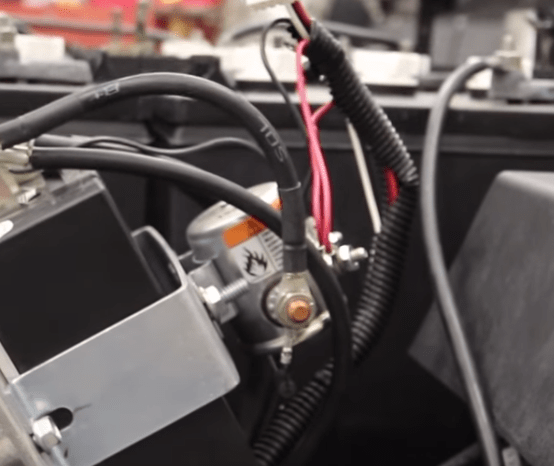Does My Golf Cart Need a Voltage Reducer? (Explained)
I was driving a golf cart around and playing my favorite podcast on a new radio I just bought, but then, after a while, I noticed the volume started to quiet down.
Well, you guessed it, after some research, I realized the lack of a golf cart’s voltage reducer was causing the problem. So, that begs the question, does my golf cart need a voltage reducer in the first place?
Yes. You should also install a voltage reducer if running an accessory such as a stereo, LED headlight kit, or light strips. It will help you run everything on the cart as intended.
In this article, dig deep into what these things do for an electric golf cart and what types of additional accessories may require one.
What is a Golf Cart Voltage Reducer?
First, we need to know what it is and what it does. According to Britannica.com, a voltage reducer, also known as a voltage regulator, converts power into a more digestible form for certain electronic components.
People use voltage regulators widely used on motor vehicles “to match the output voltage of the generator to the electrical load and to the charging requirements of the battery.”
They work using a “spring-loaded, double-pole switch” and either increase or decrease magnetic fields depending on the needed.
I won’t go into too much technical detail here, but all you really need to understand is that voltage reducers help reduce battery drain and wear and tear. This is particularly important on a 48 and/or 36-volt battery-powered cart.
You don’t need one per se, but according to some golf cart owners, installing one is a good idea if you’re adding anything to your vehicle.

of Callaway ERC Triple
Track Golf Balls for
yourself or your buddy!
What’s a type of Voltage Reducer for my cart?
It depends. You’re in luck if your golf cart has a 48-volt power supply. That number is said to be the easiest to deal with.
Once installed, a golf cart voltage reducer will take those 48 volts of power and convert them into 12 volts.
This will allow most electronic accessories to receive a safe amount of power and, thus, reduce any chances of damage or underperformance.
However, as you may have guessed, voltage reducers tend not to be one-size-fits-all. For golf carts that use 36-volt battery configurations, you’ll need the appropriate reducer to match.
Make sure you know your battery models before going to a store. Some voltage reducers feature universal fittings that connect to the negative terminal, but I’d recommend getting one specifically tailored for whatever voltage your cart uses.
What about the Operating Amperage (or Power)?
Figuring out what amperage you need might be as simple as checking the electronic devices themselves. However, the more devices you wish to install and use, the more amperage you’ll need the voltage reducer to handle.
Lighting systems, like LED kits, typically use 5-6 amps at the most. Other lighting kits, such as halogen bulbs, will use more, around 15-18 amps.

Also, don’t forget to add all the amperage you’ll use. If your voltage reducer isn’t designed to handle a certain amount, you risk seriously draining and damaging your batteries.
According to one golf cart owner, using a tester to see what voltage and amperage your power supply (batteries) are putting out is also a good idea.
Despite how many or how few accessories you want to use, it’s a good idea to get a reducer that has more than you need so that in the future, if you wish to add something else, your reducer will keep your devices running strong and smooth.
You never know when you’ll use all of your accessories simultaneously, and you’ll want a voltage reducer to handle the extra load.
Sounds great. I think I’ll get one.

and apparel.
gear, accessories and apparel. (affiliate link)
How to install Operating Amperage?
I find YouTuber DIY Golf Cart provides a helpful guide that’s relatively simple to understand. At the beginning of his video, he recommends that anyone wishing to install a voltage reducer gather all the necessary tools. Such tools include:
| Protective Eyewear |
| Wire Crimper |
| Drill |
| Wire Stripper |
| Wiring Harness and Bucket Harness |
| 9/16 Wrench (you might need a different one depending on the size of your battery pack terminal contacts) |
| Work Gloves |
DIY Golf Cart also emphasizes the need for safety. You’ll be working with live voltage, after all.
If I were installing my voltage reducer, I’d ensure that my gloves don’t have any holes or tears in them.
The last thing you’d want is a painful shock while working on your golf cart.
Considering how DIY Golf Cart installs its device inside a garage, I’d highly recommend that you do the same. You’ll have to expose the golf cart batteries to hook up any voltage reducer.
All it takes is one freak rainstorm to ruin your day and your project. Water and electricity don’t mix well and can lead to electric shock.
Consider getting some extra wiring as well. It’s better to have more wire than you need than not enough. Speaking of wiring, DIY Golf Cart advises that you close off any exposed wiring with plastic caps.
Bare wires can make contact with the golf cart body and cause things to short-circuit, thus damaging the batteries and any other devices you currently have on your cart.
Regarding vehicle batteries, it’s recommended that you remove and install the wiring in a specific order to prevent harm.
However, in DIY Golf Cart’s video, he demonstrates how he installs the positive node last.
This step might be specific to the voltage reducer he’s installing, and your battery configuration might look different from what you see in the video.
Another guide does the opposite, but like I said, it depends on the model.
If you’re scratching your head at the moment, don’t worry. You can go to certain blogs and consult other golf cart owners on what to do next.
Just like no voltage reducer is genuinely a one-size-fits-all, so is the installation process.

How do I know the voltage of my golf cart?
Usually, golf carts are equipped with 48 volts of battery. At the same time, some use 36 to 72-volt packs, 48 of battery power.
48V can increase the power to the other components or parts without raising the power. This action minimizes copper and transmission loss.
How to Charge a Golf Cart Battery?
Check if the electrolyte covers the battery’s plates. Using the right charger, connect the battery to it and keep charging within the specified time the manufacturer advises.
Read more information in this article: How to Charge a Golf Cart Battery?
In Conclusion
If you are ready to personalize your course, a voltage reducer is required to help power all the accessories you may want to add.
Aside from customization, using a voltage reducer can protect your golf cart from voltage spike. Prevent wear and tear!







